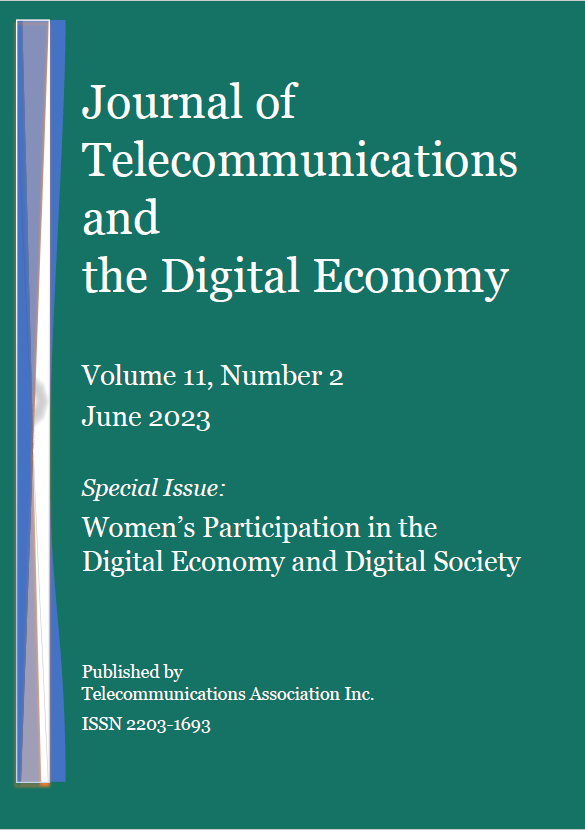"Is It Okay That She is a Woman?" Social Perceptions of Professional Segregation in IT among the Russian Brainpower
Main Article Content
Keywords
IT-education, technical university gender identity, professional gender discrimination, professional gender segregation
Abstract
The article deals with Russian brainpower's perceptions of gender segregation in a technical university when training both IT-specialists and STEM professionals in general. The theoretical and methodological basis for interpreting the results of the empirical study are the main provisions of the theory of social representations, the concept of habitus and the concept of narrative identity. The assumption used as a research hypothesis is that gender “indifference” or neutrality, rather than gender discrimination, takes place in higher technical education in the Russian technical university. The analysis of the data obtained as a result of the study confirmed that there are gender professional distinctions in the group consciousness of brainpower. In Russian speech practice and culture, a thesaurus of non-binary perception of professional gender identity has not yet been formed. At the same time, there is a shift in perceptions of gender professional identity in IT towards gender “neutrality”, which allows us to expect a relatively “soft” transformation of social attitudes and adaptability of professional consciousness to changes in the perception of gender in IT.
References
Becchio, G. A. (2019). History of Feminist and Gender Economics. London and New York: Routledge.
Blackburn, R. M., Browne, J.. Brooks, B., & Jarman, J. (2002). Explaining gender segregation. The British Journal of Sociology, 53, 513–536. https://doi.org/10.1080 /0007131022000021461
Bourdieu, P. (1979). Le Sens pratique. Minuit.
Breda, T., Jouini, E., Napp, C., & Thebault, G. (2020). Gender stereotypes can explain the gender-equality paradox. Proceedings of the National Academy of Sciences, 117(49), 31063–31069. http://dx.doi.org/10.2139/ssrn.3743128
Ceci, S. J., Williams, W. M., & Barnett, S. M. (2009). Women’s underrepresentation in science: sociocultural and biological considerations. Psychological bulletin, 135(2), 218–261. https://doi.org/10.1037/a0014412
Cejka, M. A., & Eagly, A. H. (1999). “Gender-stereotypic images of occupations correspond to the sex segregation of employment”. Personality and Social Psychology Bulletin, 25(4), 413–423. https://doi.org/10.1177/0146167299025004002
Charles, M., & Bradley, K. (2002). Equal but Separate? A Cross-National Study of Sex Segregation in Higher Education. American Sociological Review, 67(4), 573–599. https://doi.org/10.2307/3088946
Correll, S. J. (2001). Gender and the Career Choice Process: The Role of Biased Self‐Assessments. American Journal of Sociology, 106(6), 1691–1730. https://doi.org /10.1086 /321299
Froehlich, L., Olsson, M. I. T., Dorrough, .R., & Martiny, S. E. (2020). Gender at Work Across Nations: Men and Women Working in Male-Dominated and Female-Dominated Occupations are Differentially Associated with Agency and Communion. Journal of Social Issues, 76, 484–511. https://doi.org/10.1111/josi.12390
Hakim, C. (1998). Developing a Sociology for the Twenty-First Century: Preference Theory. The British Journal of Sociology, 49(1), 137–143. https://doi.org/10.2307/591267
Harding, S. (1989). Introduction. Is there a Feminist Method? In: Harding, S. (ed.) Feminism and Methodology. Milton Keynes: Open University Press.
Khotkina, Z., Dobrohleb, V., & Rusanova, N. (2018). Gendernye problemy v Rossii i metodologija ih analiza. Population, 4, 135–149. https://doi.org/10.26653/1561-7785-2018-21-4-12 (In Russian)
Khotkina, Z. (2020). Actual Challenges of Labor Market and Their Gender Implications for Employment. Population, 23(2), 136–148. https://doi.org/10.19181/population.2020.23.2.12. (In Russian)
Ledneva, A. (Ed.) (1995). Contemporary Social Theory: Bourdieu, Giddens, Habermas. Novosibirsk University Press. (In Russian)
Luk'janova, A. (2021). Digitalization and the gender pay gap. Economic Policy, 16(2), 88–117. https://doi.org/10.18288/1994-5124-2021-2-88-117 (In Russian)
Maltseva, I., & Nesterova, D. (2009). Within-Firm Gender Segregation: sources and consequences: Working paper. https://www.diw.de/documents/publikationen/73/diw_01.c.353282.de/diw_escirru0019.pdf (In Russian)
Moscovici, S. (2000). Social Representations. In G. Duveen (Ed.), Explorations in Social Psychology. Cambridge: Polity.
Ricœur, P. (1996). Soi-même comme un autre. Point-Seuil.
Roshchin, S., & Yemelina, N. (2022). Meta-analysis of the Gender Pay Gap in Russia. HSE Economic Journal, 26(2), 213–239. https://doi.org/10.17323/1813-8691-2022-26-2-213-239. (In Russian)
Rudchenko, A. (2020). Analysis of the Situation of Gender Asymmetry in the Labor Market: Theoretical Aspect. Bulletin of the International Market Institute. 2, 44-53. (In Russian)
Russian Federal State Statistics Service. (2022). Women and Men of Russia. Statistical Bulletin. Rosstat. (In Russian)
Sheltzer, J. M., & Smith, J. C. (2014). Elite male faculty in the life sciences employ fewer women. Proceedings of the National Academy of Sciences of the United States of America, 111(28), 10107–10112. https://doi.org/10.1073/pnas.1403334111
Tétaz, J. M. (2012). Narrative Identity as a Theory of Practical Subjectivity. An Essay on Reconstruction of Paul Ricœur’s theory. Sociological Review, 2. 100–121. (In Russian)
Tijdens, K. G. (1997). Gender segregation in IT Occupations. In: A. F. Grundy, D. Kohler, V. Oechtering & U. Petersen (Eds), Women, Work and Computerization — Spinning a Web from Past to Future. Springer-Verlag, p. 449.
Vorob’eva, A. (2018). Sociological Analysis of the Problem of Professional Gender Segregation in Russia. Theory and Practice of Social Development, 8(126), 56–59. https://doi.org /10.24158/tipor.2018.8.10. (In Russian)
Zadvornova, Yu. (2019). Elimination of Gender Wage Gap in STEM as a Key Task of Eradication of Gender Inequality in Countries with Digital Economy. Woman in Russian Society, 3, 114–120. https://doi.org/10.21064/WinRS.2019.3.9. (In Russian)
Zaichenko, N., & Savel'eva, E. (2020). Gender Discourse in the Representations of the Participants of Educational Relationships in the Space of Petersburg School. Interaction. Interviewing. Interpretation, 12(3), 50–74. https://doi.org/10.19181/inter.2020.12.3.3. (In Russian)
Zdravomyslova, E. A., & Temkina, A. А. (2015). 12 lectures on gender sociology: textbook. Saint-Petersburg: Publishing house of European University in Saint Petersburg. (In Russian)






